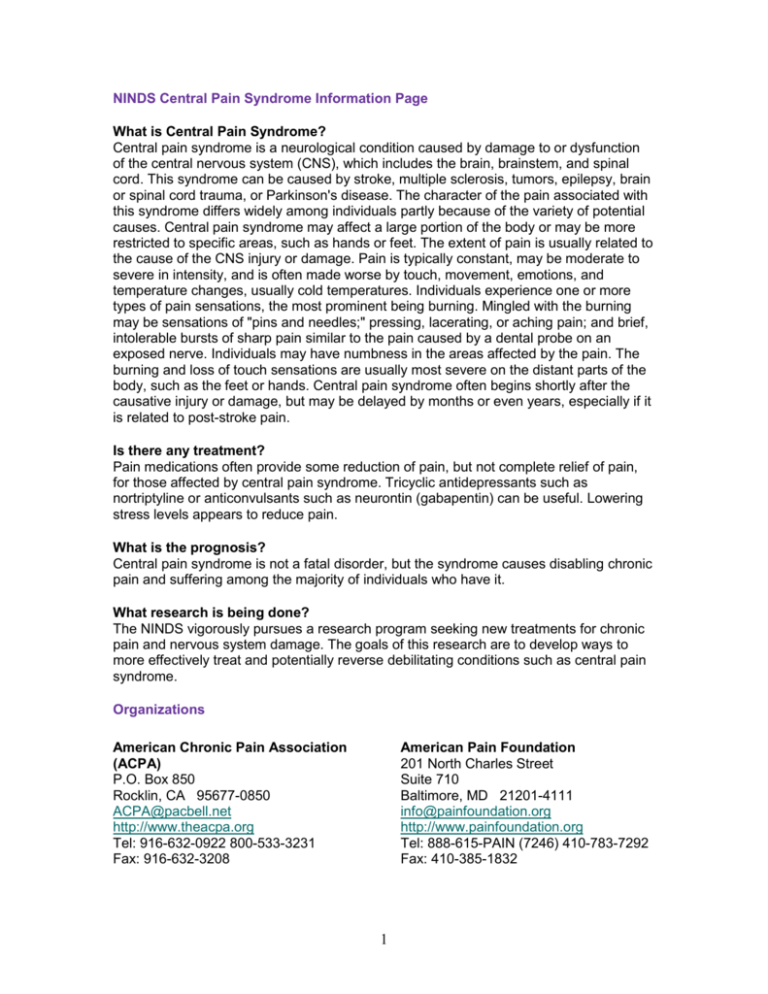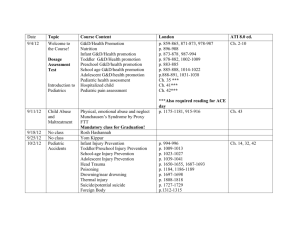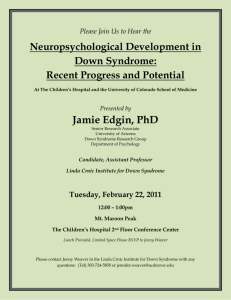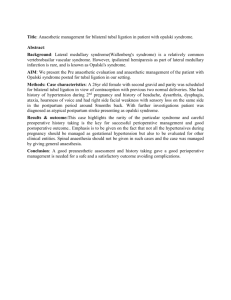NINDS Central Pain Syndrome Information Page
advertisement

NINDS Central Pain Syndrome Information Page What is Central Pain Syndrome? Central pain syndrome is a neurological condition caused by damage to or dysfunction of the central nervous system (CNS), which includes the brain, brainstem, and spinal cord. This syndrome can be caused by stroke, multiple sclerosis, tumors, epilepsy, brain or spinal cord trauma, or Parkinson's disease. The character of the pain associated with this syndrome differs widely among individuals partly because of the variety of potential causes. Central pain syndrome may affect a large portion of the body or may be more restricted to specific areas, such as hands or feet. The extent of pain is usually related to the cause of the CNS injury or damage. Pain is typically constant, may be moderate to severe in intensity, and is often made worse by touch, movement, emotions, and temperature changes, usually cold temperatures. Individuals experience one or more types of pain sensations, the most prominent being burning. Mingled with the burning may be sensations of "pins and needles;" pressing, lacerating, or aching pain; and brief, intolerable bursts of sharp pain similar to the pain caused by a dental probe on an exposed nerve. Individuals may have numbness in the areas affected by the pain. The burning and loss of touch sensations are usually most severe on the distant parts of the body, such as the feet or hands. Central pain syndrome often begins shortly after the causative injury or damage, but may be delayed by months or even years, especially if it is related to post-stroke pain. Is there any treatment? Pain medications often provide some reduction of pain, but not complete relief of pain, for those affected by central pain syndrome. Tricyclic antidepressants such as nortriptyline or anticonvulsants such as neurontin (gabapentin) can be useful. Lowering stress levels appears to reduce pain. What is the prognosis? Central pain syndrome is not a fatal disorder, but the syndrome causes disabling chronic pain and suffering among the majority of individuals who have it. What research is being done? The NINDS vigorously pursues a research program seeking new treatments for chronic pain and nervous system damage. The goals of this research are to develop ways to more effectively treat and potentially reverse debilitating conditions such as central pain syndrome. Organizations American Chronic Pain Association (ACPA) P.O. Box 850 Rocklin, CA 95677-0850 ACPA@pacbell.net http://www.theacpa.org Tel: 916-632-0922 800-533-3231 Fax: 916-632-3208 American Pain Foundation 201 North Charles Street Suite 710 Baltimore, MD 21201-4111 info@painfoundation.org http://www.painfoundation.org Tel: 888-615-PAIN (7246) 410-783-7292 Fax: 410-385-1832 1 National Chronic Pain Outreach Association (NCPOA) P.O. Box 274 Millboro, VA 24460 ncpoa@cfw.com http://www.chronicpain.org Tel: 540-862-9437 Fax: 540-862-9485 National Foundation for the Treatment of Pain P.O. Box 70045 Houston, TX 77270 markgordon@paincare.org http://www.paincare.org Tel: 713-862-9332 Fax: 713-862-9346 Prepared by: Office of Communications and Public Liaison National Institute of Neurological Disorders and Stroke National Institutes of Health Bethesda, MD 20892 NINDS health-related material is provided for information purposes only and does not necessarily represent endorsement by or an official position of the National Institute of Neurological Disorders and Stroke or any other Federal agency. Advice on the treatment or care of an individual patient should be obtained through consultation with a physician who has examined that patient or is familiar with that patient's medical history. All NINDS-prepared information is in the public domain and may be freely copied. Credit to the NINDS or the NIH is appreciated. Last updated February 09, 2005 2






